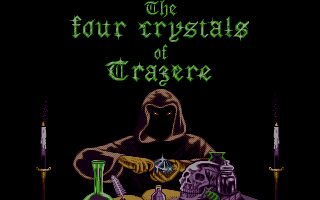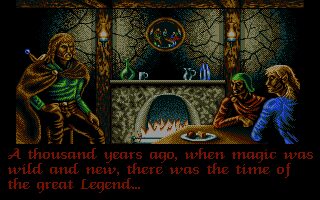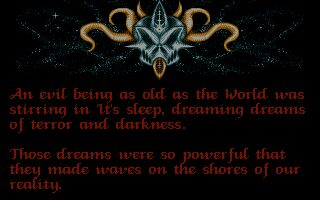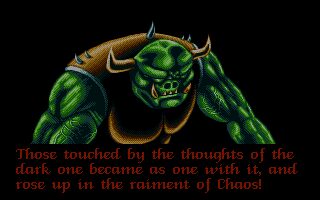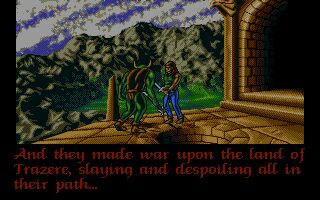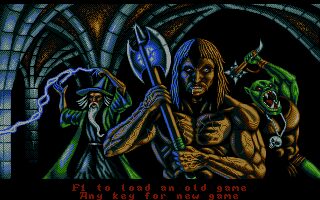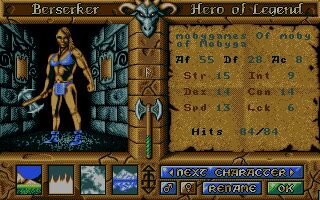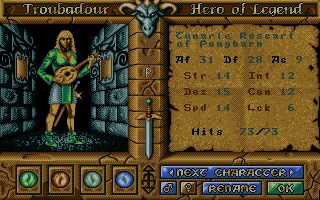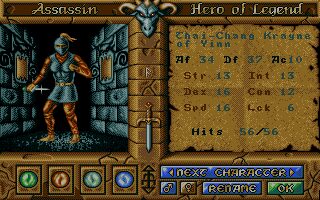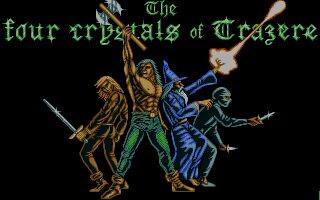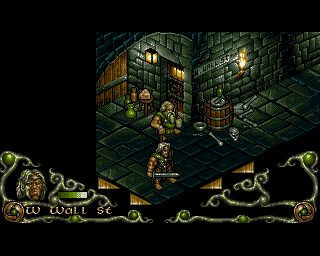Legend is a 3D Isometric fantasy role-playing game developed by Mindscape and published by The Software Toolworks in 1992. It was released for the Amiga, Atari ST, and DOS. The title, known in the U.S.A. as The Four Crystals of Trazere, released a demo in October of that year and a sequel in the next called Worlds of Legend: Son of the Empire.
The story is about four adventurers who must explore various locations to find the origin of an ancient evil that seeks to awaken. To do this, the heroes must avoid or attack enemy factions, crawl dungeons and castles, solve puzzles and find their way through the lands of Trazere.
The game designed by Peter Owen-James and Anthony Taglione is a classic RPG that features the traditional tools of this genre, such as battle screens, sale of loot won in the battles, and constant improvement of equipment. Besides, it maintains the classic composition of its members. Warriors with more resistance engage in close combat while others with less health and more range, such as mages, contribute to the fight while avoiding being attacked. All characters can be edited: from more aesthetic features like gender, appearance, and name to others more inherent to gameplay, like special skills or stats.
The title has many features that differentiate it as a unique entry into the world of RPGs. Firstly, while the characters explore, they must go through several villages that may be occupied by enemy factions. Depending on the difficulty framed by the color of the flag, the player can choose whether to fight or border the area in search of a safer one. Also, unlike other titles where mages in the team simply buy and learn spells as they level up, Legend operates an entirely different system. Here wizards go around to different stores to buy ingredients for their spells. With these, the player can experiment by combining them and creating the casts that best suit their needs. This personalizes the experience and makes that, instead of buying magic, obtaining a good power feels earned.
Graphically, Legend hits the nail with the style of play it tries to evoke. The entire entry is hand-drawn in a technique that involves low saturation, but high opacity and shadow predominance. Another characteristic that defines the style of the title is the consistency of its colors. Although some greens and reds are very present in the adventure, it is evident that yellow and blue are the protagonists of the scene at all times. Doing justice to light and darkness, yellow is present in the outdoor terrain, while blue floods the stages of dungeon and castle crawling.
Legend generally received positive reviews. Praising the magic system and the incentive to the player's creativity when customizing their characters, it has been considered by some reviewers as the best RPG of the decade. If you didn't play this hidden gem, this is your chance to do so and meet a title that many consider being the precursor to the Diablo saga.
That's why you should not be surprised if this is exactly the 1000th game we publish on GamesNostalgia! Yes, you read it correctly, 1000! Have fun!

